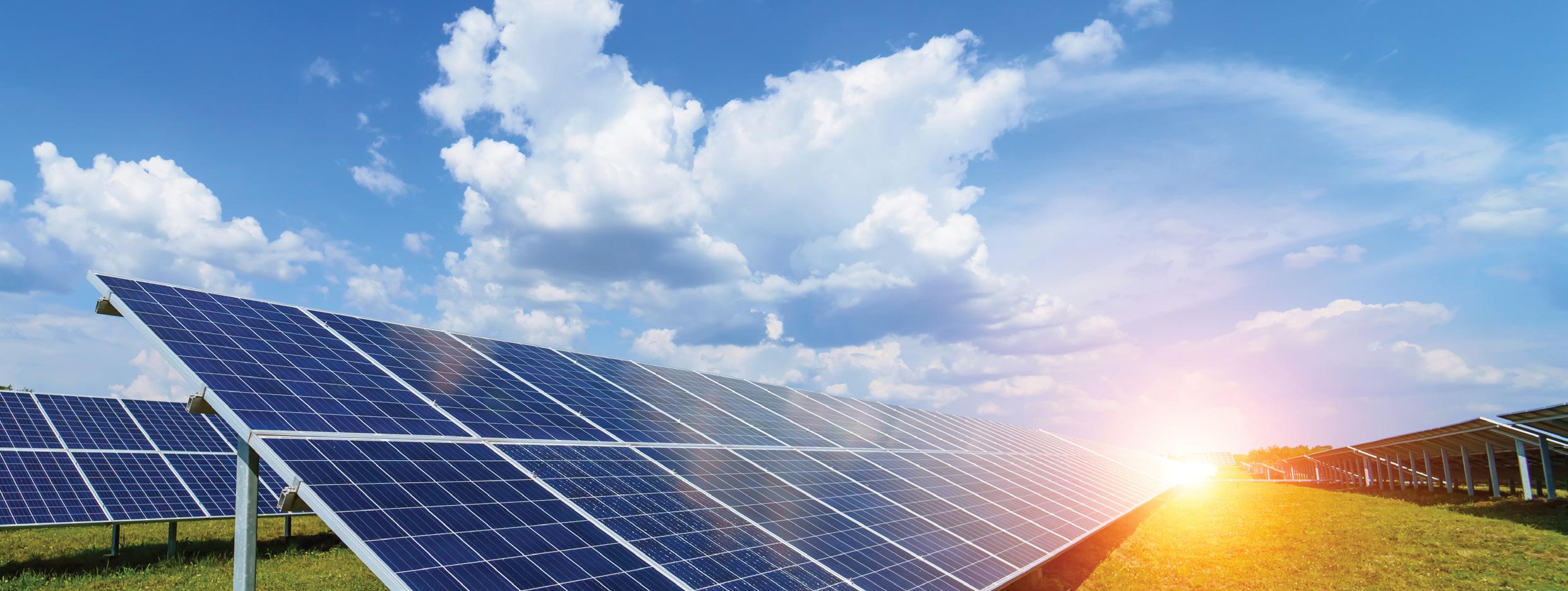
3 minute read
Renewable energy infrastructure – an opportunity to drive business transformation?
RENEWABLE ENERGY INFRASTRUCTURE
– AN OPPORTUNITY TO DRIVE BUSINESS TRANSFORMATION?
Advertisement
As the world looks to reduce its reliance on fossil fuels and move towards clean energy sources, new energy networks are being built to support this transition. Geospatial systems can play a vital role in the planning and construction of these new networks, providing the locational intelligence needed to ensure their smooth operation.
The Paris Agreement, signed by nearly 200 nations in 2016, was a landmark moment in the fight against climate change. The agreement committed signatories to reducing their carbon emissions in an effort to prevent global temperatures from rising more than two degrees Celsius above pre-industrial levels.
Since then, we have seen a number of countries make great strides in implementing clean energy infrastructure and electric vehicles as part of their commitment to the Paris Agreement. Solar energy has become one of the fastest-growing industries in the world, with China and the US leading the way in terms of installed capacity. Electric vehicles are also on the rise, with sales doubling in 2021 to a new record of 6.6 million.
There has been a significant increase in investment in renewable energy globally in recent years. This is in part due to the Paris Agreement and the need to meet emissions targets, but also because renewable energy is becoming increasingly cost-effective.
In the UK, the government has invested £2.5 billion in clean energy, with companies such as BP pledging to invest up to £18 billion in the UK energy system by 2030. This is a huge commitment from both the public and private sectors, and shows that renewable energy is seen as a viable option for powering the country.
Australia has traditionally been committed to coal-powered electricity stations, however, over 15 per cent of the country's electricity now comes from renewable sources. This is expected to increase in the future as legislation drives more investment in this sector.
Energy utilities face the challenge of maintaining current network assets, whilst undertaking significant planning and investment to meet the emerging demand for clean energy infrastructure.
With the new network planning and build, there is now an opportunity to deploy best practices for future network asset management with the geospatial information system (GIS) becoming the single source of network location intelligence. This will help improve decision-making around network planning, operations and maintenance. Ultimately, it will also enable more effective and efficient use of resources, leading to improved service delivery for energy customers.
As AI continues to develop, it will help utility companies manage their network infrastructure using predictive analytics to identify potential network problems before they occur, automatically route repair crews to the location of outages, and will help with optimal scheduling of maintenance and upgrades. Virtual models of infrastructure, use of digital twins, IoT and smart metering data, will simulate different scenarios and test solutions for optimal outcomes.
As geospatial data becomes more accurate and widely available, it will play an increasingly important role in business applications and processes. This includes network planning and engineering, network asset management, field services and operations, safety and compliance, and customer service with real-time communications.
By integrating geospatial data into other systems, businesses will be able to improve collaboration, make better decisions, and support digital transformation.
It will then make sense to apply this best-practice use of geospatial data to legacy network assets.
Industry experts predict geospatial data will become a critical part of business operations in the future. Those who adopt best-practice GIS systems now will be wellpositioned to take advantage of the opportunities that next generation network asset management and digital transformation brings.
In conclusion, with Deloitte’s Global Industry Survey 4.0 showing 95 per cent of energy leaders believing digital transformation must be a top priority, the demand for new clean energy infrastructure is an ideal opportunity to fund and bring forward those initiatives.










